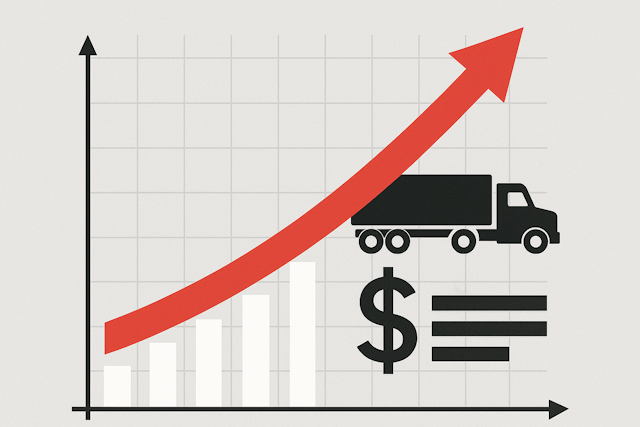Full News
Freight Rates Expected to Rise Amid Ongoing U.S. Driver Shortage
Oct 15, 2025
Administrator

truckdrivers.biz
Over the next 6–12 months, U.S. freight rates are projected to increase as the trucking industry faces persistent driver shortages and higher operating costs. Analysts report that the current market is gradually tightening, pushing both spot and contract rates upward.
As of fall 2025, the average spot rate for dry van loads is around $2.06 per mile, while contract rates hover near $2.35. Forecasts suggest that by mid-2026, these could climb to $2.30–$2.60 per mile, depending on fuel prices, seasonal demand, and labor availability.
The main factors driving this growth include:
A shortage of qualified drivers, with an estimated 80,000 unfilled positions across the U.S.
Rising costs for insurance, maintenance, and compliance.
Stronger freight demand from retail and manufacturing sectors.
Trade policy shifts and tariffs, which affect cross-border freight from Mexico and Canada.
While large carriers may absorb these changes through long-term contracts, smaller operators are more exposed to fluctuations in the spot market. Experts expect seasonal rate spikes during peak shipping periods in late 2025 and early 2026, particularly for reefer and flatbed loads.
The driver shortage remains one of the industry’s biggest challenges. The average age of truck drivers in the U.S. now exceeds 47, and younger workers are not entering the field fast enough to replace retirees. Difficult working conditions, long hours, and time away from home continue to discourage new applicants.
If these trends persist, the market could see a 5–10 % increase in freight rates within the next year. Some fleets are turning to automation, driver-assist systems, and recruitment incentives to stabilize operations, but experts agree that labor scarcity will remain a major issue well into 2026.
Overall, the U.S. trucking sector is heading toward a period of higher prices, tighter capacity, and increased competition for qualified drivers.
As of fall 2025, the average spot rate for dry van loads is around $2.06 per mile, while contract rates hover near $2.35. Forecasts suggest that by mid-2026, these could climb to $2.30–$2.60 per mile, depending on fuel prices, seasonal demand, and labor availability.
The main factors driving this growth include:
A shortage of qualified drivers, with an estimated 80,000 unfilled positions across the U.S.
Rising costs for insurance, maintenance, and compliance.
Stronger freight demand from retail and manufacturing sectors.
Trade policy shifts and tariffs, which affect cross-border freight from Mexico and Canada.
While large carriers may absorb these changes through long-term contracts, smaller operators are more exposed to fluctuations in the spot market. Experts expect seasonal rate spikes during peak shipping periods in late 2025 and early 2026, particularly for reefer and flatbed loads.
The driver shortage remains one of the industry’s biggest challenges. The average age of truck drivers in the U.S. now exceeds 47, and younger workers are not entering the field fast enough to replace retirees. Difficult working conditions, long hours, and time away from home continue to discourage new applicants.
If these trends persist, the market could see a 5–10 % increase in freight rates within the next year. Some fleets are turning to automation, driver-assist systems, and recruitment incentives to stabilize operations, but experts agree that labor scarcity will remain a major issue well into 2026.
Overall, the U.S. trucking sector is heading toward a period of higher prices, tighter capacity, and increased competition for qualified drivers.